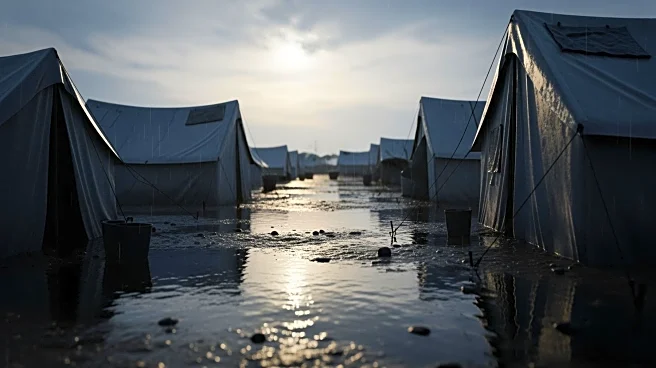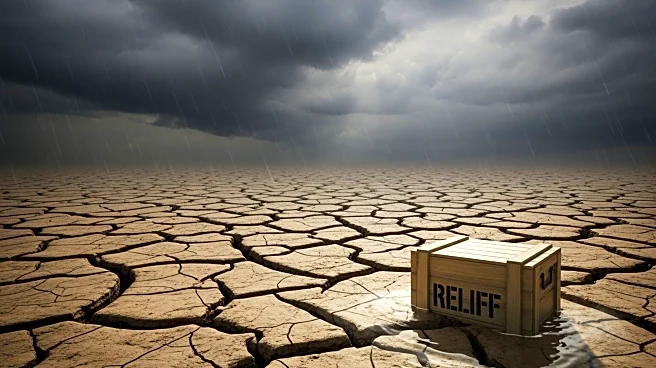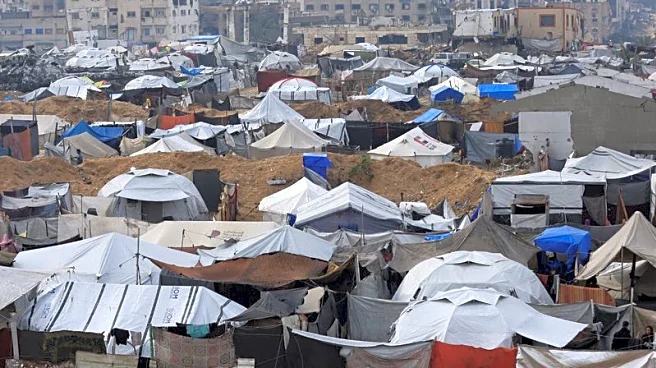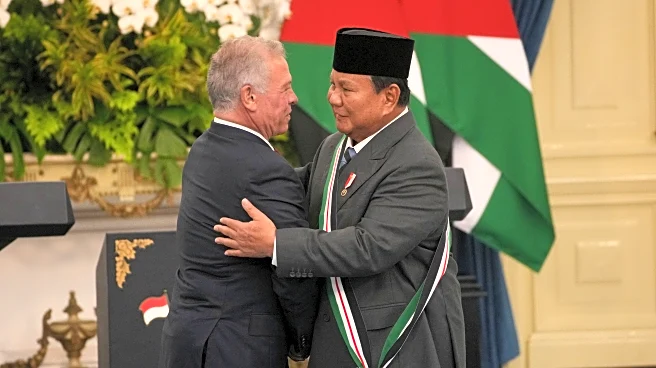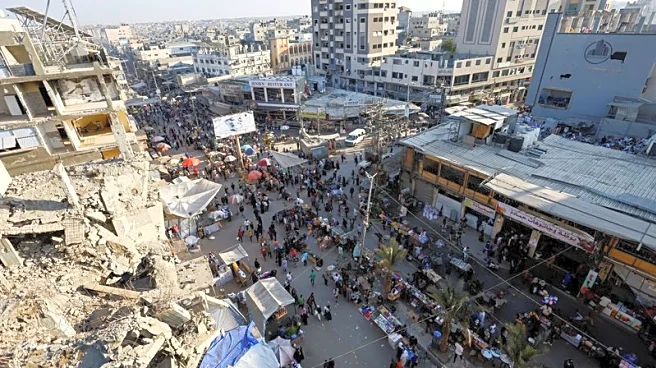What's Happening?
Heavy rainfall in Gaza has led to flooding in camps housing displaced Palestinians, whose homes were destroyed during Israeli attacks over the past two years. The intense rain has soaked tents and belongings,
leaving residents without means to dry them. Mahmoud Basal, spokesperson for Gaza Civil Defense, reported receiving hundreds of pleas for help, but resources are scarce. Many tents have collapsed under the weight of the rain, and residents are struggling to cope with the conditions. The United Nations Office for the Coordination of Humanitarian Affairs (OCHA) states that over 1.4 million people in Gaza require emergency shelter items, with more than 320,000 housing units damaged by military attacks.
Why It's Important?
The flooding highlights the dire humanitarian situation in Gaza, where displaced families are exposed to harsh weather conditions without adequate shelter. The lack of resources and infrastructure to prevent flooding exacerbates the crisis, leaving thousands vulnerable. The situation underscores the urgent need for humanitarian aid, which has been limited due to restrictions on entry into Gaza. The inability to provide sufficient shelter and aid could lead to further health and safety risks for the displaced population, emphasizing the need for international intervention and support.
What's Next?
The United Nations and other humanitarian organizations are likely to increase pressure on Israeli authorities to allow more aid into Gaza. Efforts to secure the entry of shelter items stuck in Jordan, Egypt, and Israel may intensify. The international community may also seek to address the broader humanitarian needs in Gaza, advocating for improved infrastructure and resources to prevent future flooding and support displaced families. Continued dialogue and negotiations may be necessary to facilitate the flow of aid and improve living conditions for those affected.
Beyond the Headlines
The flooding in Gaza raises ethical and legal questions about the responsibility of international actors in providing humanitarian aid and addressing the consequences of military actions. The situation may prompt discussions on the long-term impacts of displacement and the need for sustainable solutions to prevent recurring crises. Cultural dimensions, such as the resilience and coping mechanisms of displaced communities, may also be explored as part of broader efforts to support affected populations.
